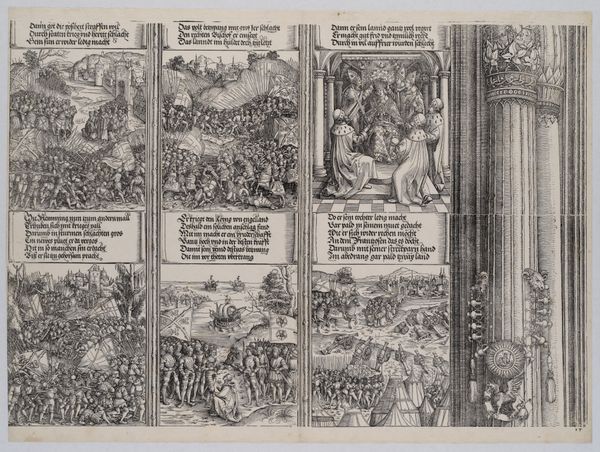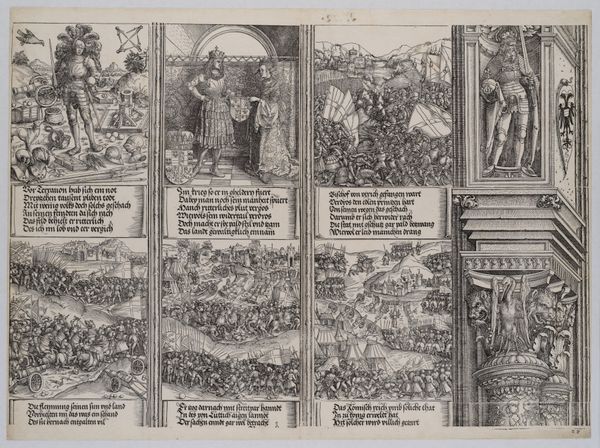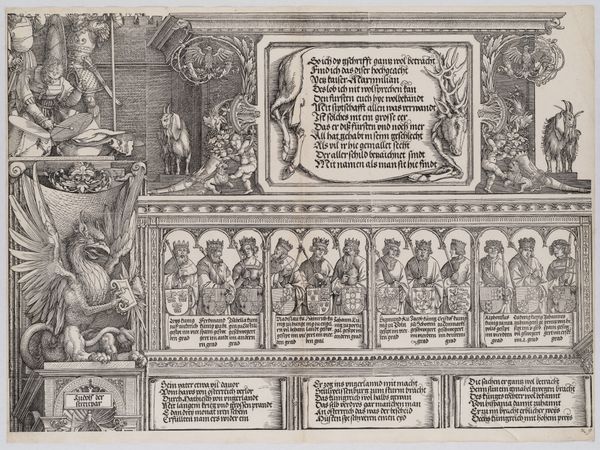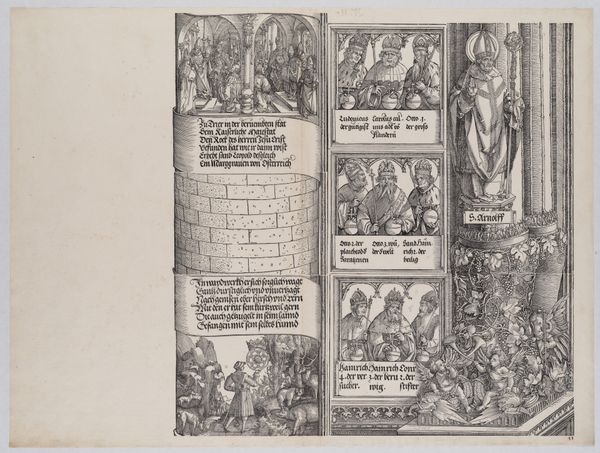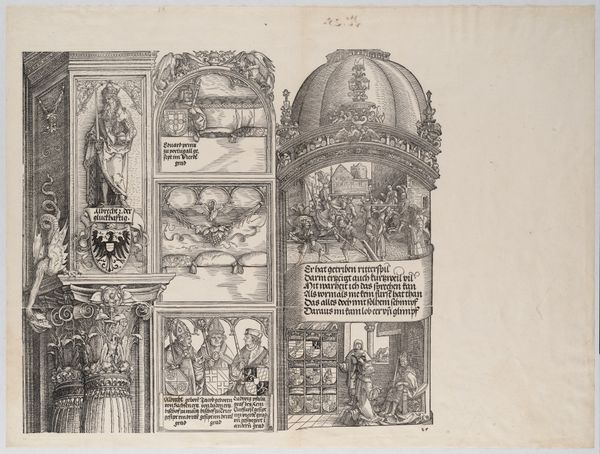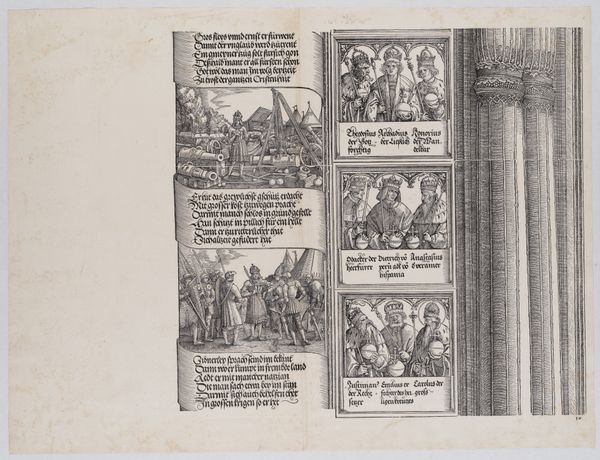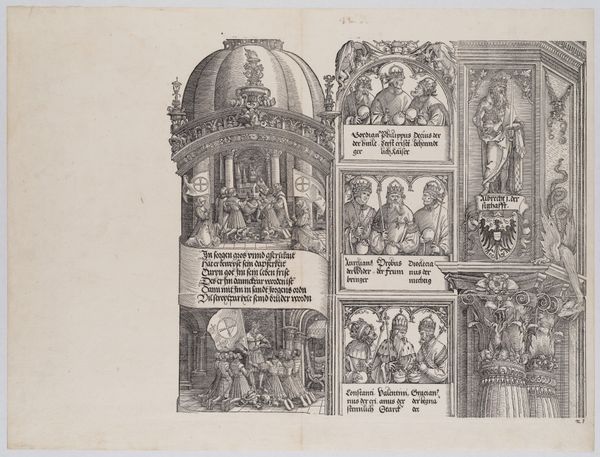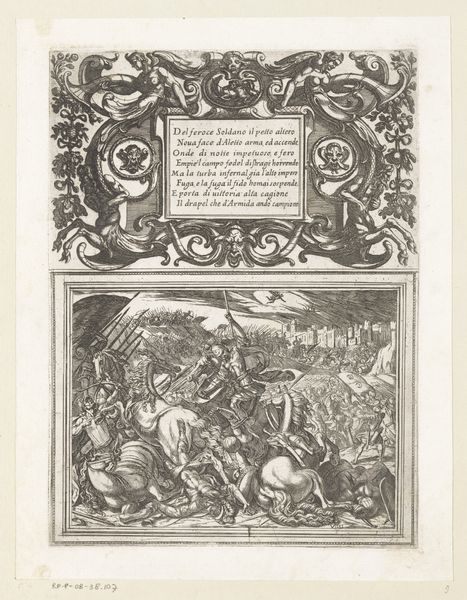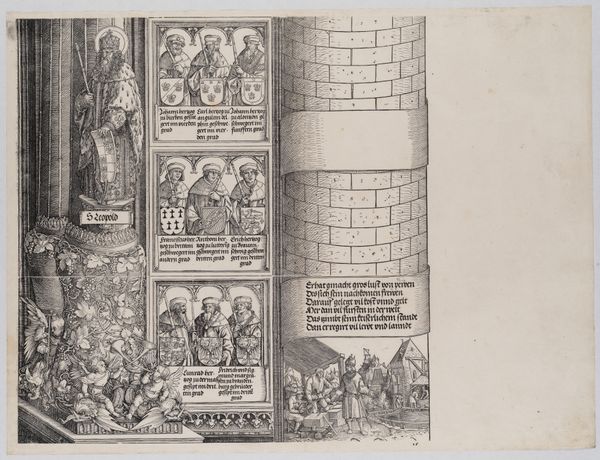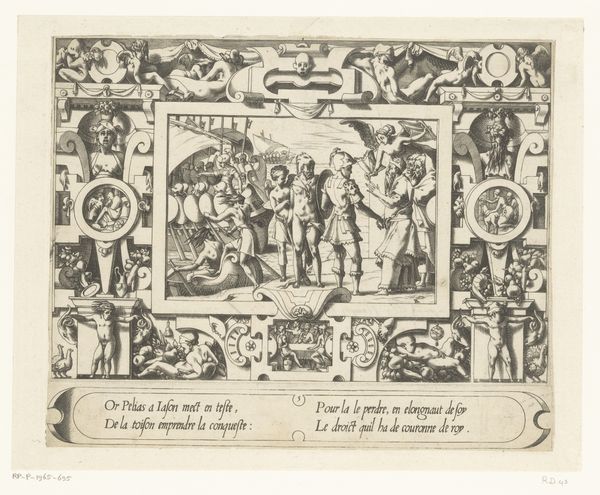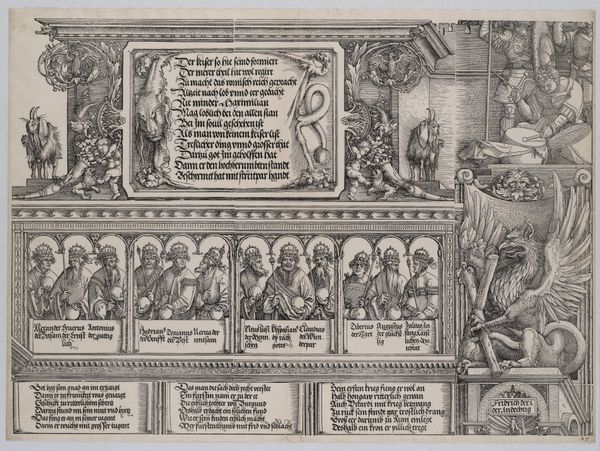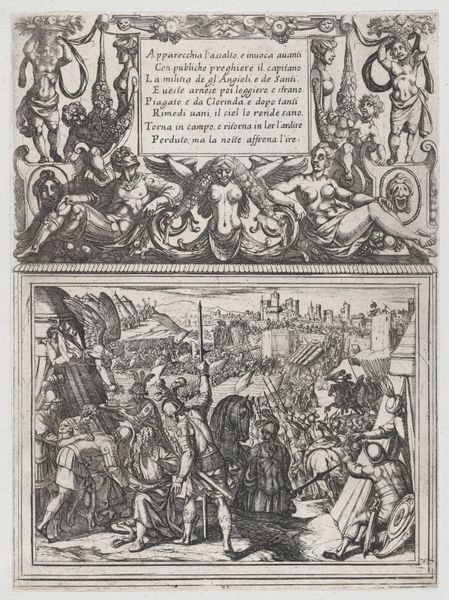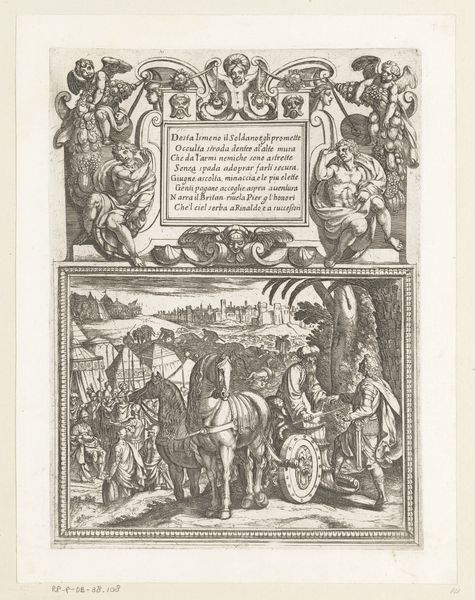
Maximilian's Alliance with Henry VIII; The Double Wedding in Vienna; The Campaign in Gelderland; The Investiture of Massimiliano Sforza as Duke of Milan; and The Venetian War, from the Arch of Honor, proof, dated 1515, printed 1517-18 1515
0:00
0:00
Dimensions: Sheet: 18 3/16 × 24 13/16 in. (46.2 × 63 cm)
Copyright: Public Domain
This intricate print, made by Albrecht Dürer in 1515, and printed a few years later, depicts key moments in the reign of Holy Roman Emperor Maximilian I. It is a testament to the role of art in shaping political narratives. Commissioned by Maximilian himself, the "Arch of Honor" was designed as a vast propaganda project to immortalize his achievements. Dürer, a master of printmaking, used visual codes and historical references to portray Maximilian as a powerful and virtuous ruler. The scenes depicted, such as alliances, weddings, and military campaigns, all contribute to this carefully constructed image. The artwork reflects the social conditions of the time, where rulers used art to legitimize their power and promote their agendas. It is a fascinating example of how institutions and powerful figures shape artistic production. Understanding the social and institutional context is crucial to interpreting this work. Scholars draw on primary sources, like letters and court records, to understand the political motivations behind the work, shedding light on the complex relationship between art, power, and society.
Comments
No comments
Be the first to comment and join the conversation on the ultimate creative platform.
